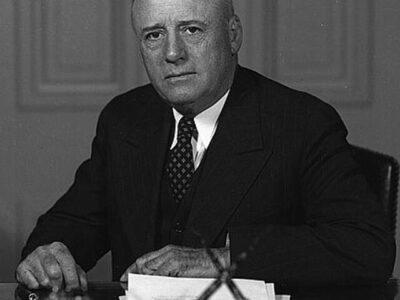Jumping the Fence Line, Embracing the Grid
Precedent from another agency for the Clean Power Plan.
If you’ve been reading this blog or otherwise keeping up with environmental law, you’ve probably heard this a hundred times: In rolling back Obama’s signature climate regulation, the Clean Power Plan, the Trump Administration is relying on the idea that EPA’s jurisdiction stops at the fence line. That is, according to the Trump folks, EPA can impose measures on a each plant, but not measures that go beyond the fence line like requiring more use of renewable energy of a coal or natural gas generator. I’ve blogged previously about why this argument might not even apply, because reducing your operating hours is something you can accomplish without getting close to the fence, let alone crossing it.
But today I want to talk a little more generally about why EPA should have some flexibility in interpreting the law to keep up with changes in the way the grid operates. That’s exactly what another agency did in an analogous situation where a similar move from a disaggregated approach to a systemic one got full support from the courts.
The agency I have in mind is the Federal Energy Regulatory Commission (FERC). Among other things, FERC has jurisdiction over wholesale electricity sales. Traditionally, FERC regulated by requiring sellers to file a “tariff” giving their terms and conditions for sale; FERC would then decide if the price and other terms were reasonable. This worked reasonably well for decades, back when utilities produced almost all their power and there were only a few big power outside generators that sold power to them. But the nature of the grid changed. Many more generators started entering the market, and some key states forced their utilities to separate their generation from their retail operations. Moreover, it became much easier to move electricity over large differences, so the country ended up divided into three big “interconnections” rather than a bunch of local grids. It became clear that FERC’s traditional approach was not going to work to protect the interests of consumers.
So FERC decided to change gears. Instead of trying to regulate the terms and conditions generator by generator, it decided to grapple with the wholesale market as a whole, on the theory that a competitive market would automatically protect consumers from efforts to rig prices. Leaping beyond the granular approach it had always used in the past — and that Congress had surely expected — FERC embarked on a campaign to revamp the country’s energy markets.
This is actually a great example, like the Clean Power Plan, of adapting an old statute to address a new problem, as Jody Freeman and David Spend have pointed out in a well-known article. But my point is a bit different. where emissions from power plants are concerned, it’s not just that they involve new solutions for new problems, it’s the same solution, a grid-wide approach, to the same problem, a changing grid.
As I see it, what FERC did is just like the Obama Administration tried to do on the environmental side with the Clean Power Plan. It was plain to EPA that the traditional, generator-by-generator approach wasn’t going to work. We now know in even more clearly just how badly the traditional disaggregated approach would work. Trump’s replacement plan would result in microscopic decreases in carbon emissions and could even increase emissions of other pollutants. The “inside the fence line” approach isn’t consistent with the actual operation of the grid, and it isn’t consistent with EPA’s statutory duty to do something real about carbon emissions. In the same way, individualized tariffs were not responsible to the changed grid and to FERC’s duty to address unreasonable prices and discriminatory practices. In both cases, the same solution is required: give up on disaggregated granular regulation and address the power system as a whole.
Just as courts happily authorized FERC to dump tradition and go for grid-wide solutions, so should they allow EPA to do the same. In both cases, the justification is the same: a transformed power system and new problems require systemic solutions, if agencies are to fulfill the missions that Congress gave them. As they say, what’s sauce for the goose is sauce for the gander.







Reader Comments